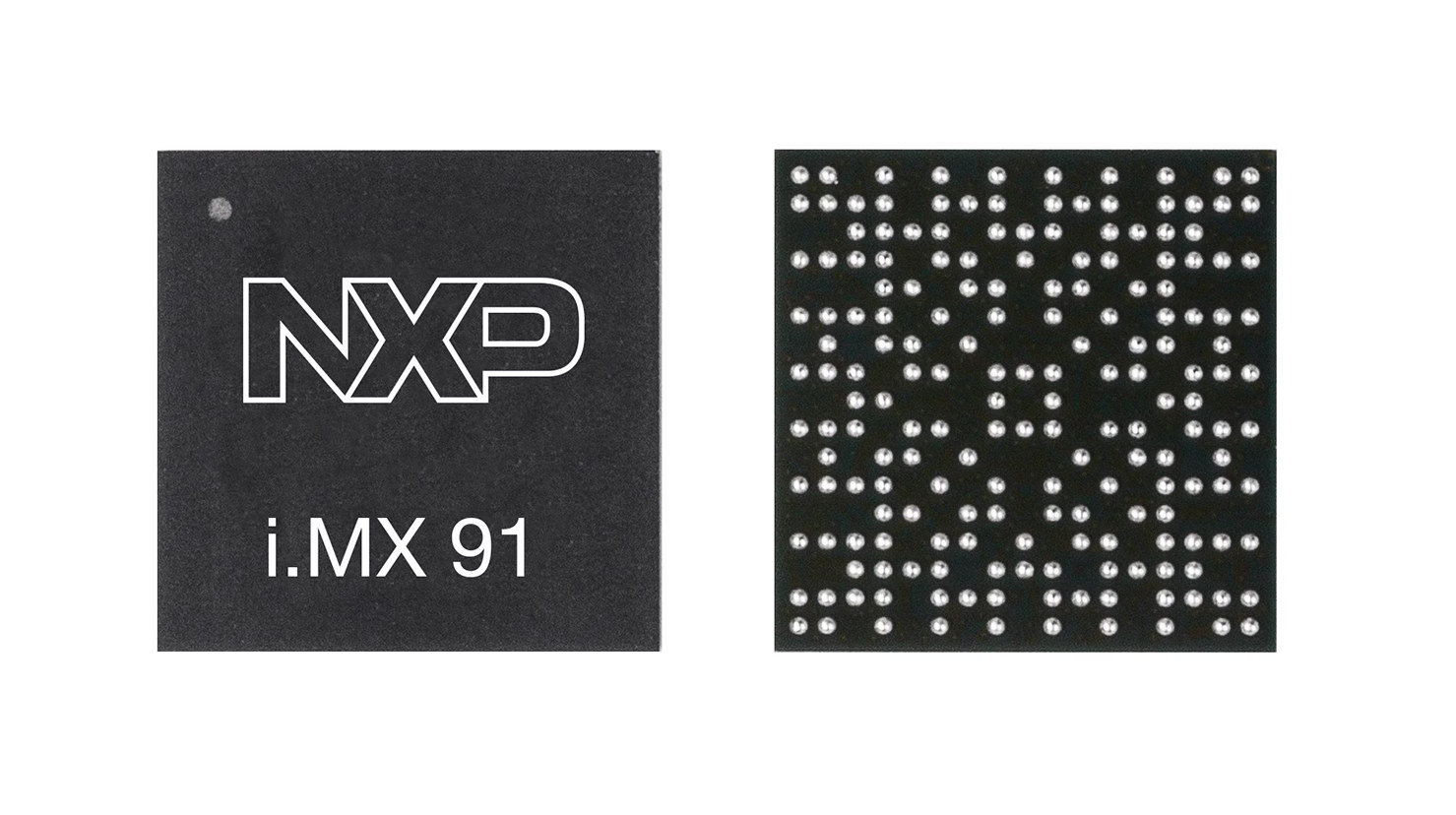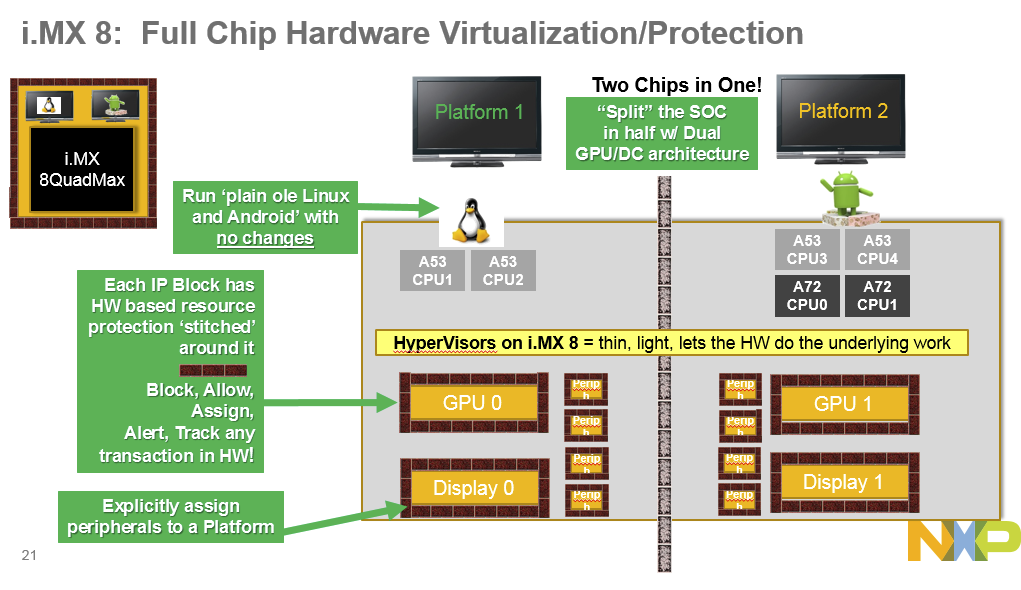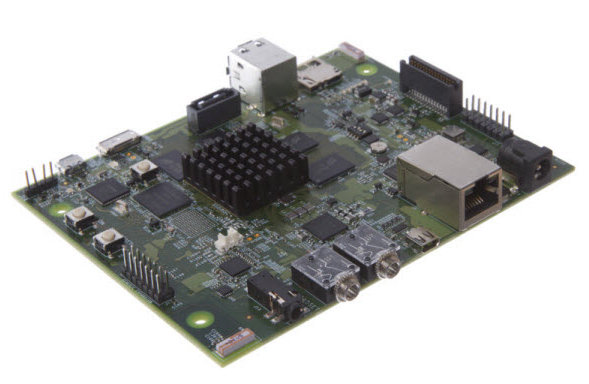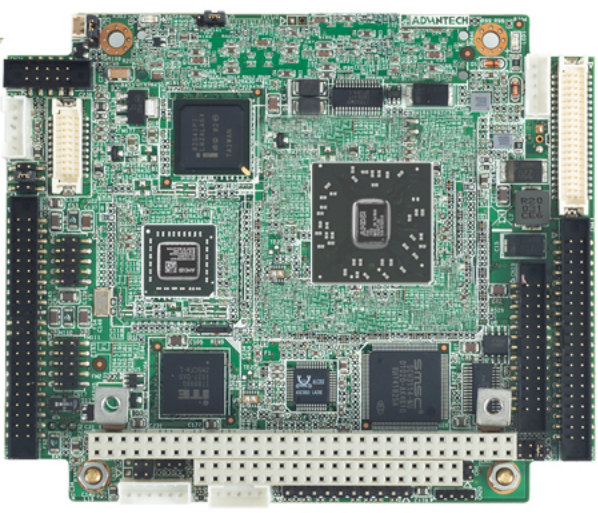NXP has just unveiled the NXP i.MX 91 single-core Cortex-A55 processor following the introduction of the i.MX 93 in 2021, and designed for cost-optimized edge devices running Linux. The NXP i.MX 93 processor comes with up to two Cortex-A55 cores, a Cortex-M33 real-time core, and an Ethos U65 microNPU, but targeting entry-level Linux systems, the NXP i.MX 91 processor does without the real-time core and the AI acceleration, while still integrating NXP EdgeLock Secure Enclave, and the company highlights support for multiple wireless connectivity options through companion chips such as the IW612 that supports Wi-Fi 6, Bluetooth 5.2, 802.15.4, and the new Matter protocol. NXP i.MX 91 specifications: CPU – Arm Cortex-A55 running at up to 1.4GHz with 256KB L2 cache System Memory – Up to 2.4GT/s x16 LPDDR4 with Inline ECC Storage 3x SD 3.0, SDIO 3.0, eMMC 5.1 1x Octal SPI including support for SPI NOR and SPI […]
Meet NXP i.MX8 Processor Families: i.MX 8 for High performance, i.MX 8M for Audio/Video & i.MX 8X for Low Power
Freescale and then NXP have been talking about i.MX8 processors for several years, and this spring unveiled i.MX 8 Multisensory Enablement Kit without giving much details about the processor except it would include both Cortex A72 & A53 cores. But NXP put out a press release yesterday about “Multisensory Automotive eCockpit Platform to Advance Multimedia Experiences in Future Cars” which appears to be the same news but with different words, except the content of the PR has more interesting bits such as: The new family, which is based on up to six 64-bit ARMv8-A technology processor cores and includes a HiFi 4 DSP, LPDDR4 and DDR4 memory support as well as dual Gigabit Ethernet with audio video bridging (AVB) capability, is designed to advance automotive dashboard graphics such as instrument clusters, infotainment visuals, heads-up displays, rear-seat screens and more. Capable of driving four HD screens with independent content or a […]
$329 Texas Instruments OMAP5432 EVM / Development Board
Earlier this month, Texas Instruments has apparently discreetly, not to say surreptitiously, launched their OMAP5432 evaluation module. Beside the dual Cortex A15, dual Cortex M4 OMAP5 SoC, the board comes with 2GB RAM, a 4GB eMMC module, USB 3.0, SATA and more. OMAP5432 EVM Specifications: SoC – Texas Instruments OMAP5432 Multicore ARM Cortex A15/M4 processor with PowerVR SGX544MP2 GPU System Memory – 2GB DDR3L (implemented using 4x Micron 4Gb DDR3L devices (MT41K256M16HA-125:E) Storage – 4GB EMMC/iNAND Ultra device + SD/MMC 4-bit Micro-SD card cage Display / Video: HDMI via native OMAP HDMI interface DSI Display Expansion (DSIPORTA and DSIPORTC) via 100-pin expansion connector Parallel Display Expansion (DPI) via 100-pin expansion connector Audio – Audio Jack 3.5mm, Stereo out & in, Headset Jack (earphone/microphone) USB – 3x USB HS 2.0 (2 via USB connector, one via 0.1″ header), 1x USB 3.0, and 1x USB OTG 2.0/3.0 Connectivity – 10/100 802.3u Ethernet. […]
AMD Introduces AMD G-T16R G-Series APU with 2.3 Watts Power Consumption
AMD has unveiled another APU in its Embedded G-Series processor family with the AMD Embedded G-T16R, which aims to provide a more powerful (up to 3x) and less power-hungry (7% less) replacement to AMD Geode LX processors. The AMD G-T16R is targeted at very low power, small form factor and cost-sensitive embedded designs. The company claims the processor consumes about 2.3 watts on average or 4.5 watts thermal design power (TDP). This new AMD embedded processor targets industrial control, point-of-sale, medical appliance and transportation markets. As with the other G-Series platforms, the G-T16R can fit into small form factor boards by implementing a two-chip platform: APU + controller hub. AMD G-T16R is clocked at 615MHz, features a Radeon HD 6250 GPU and supports 1920×1200 resolution via VGA, single link DVI and DisplayPort 1.1a video outputs. It can also output 1080p via HDMI and LVDS. The APU supports Windows Embedded Compact […]






